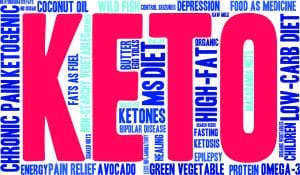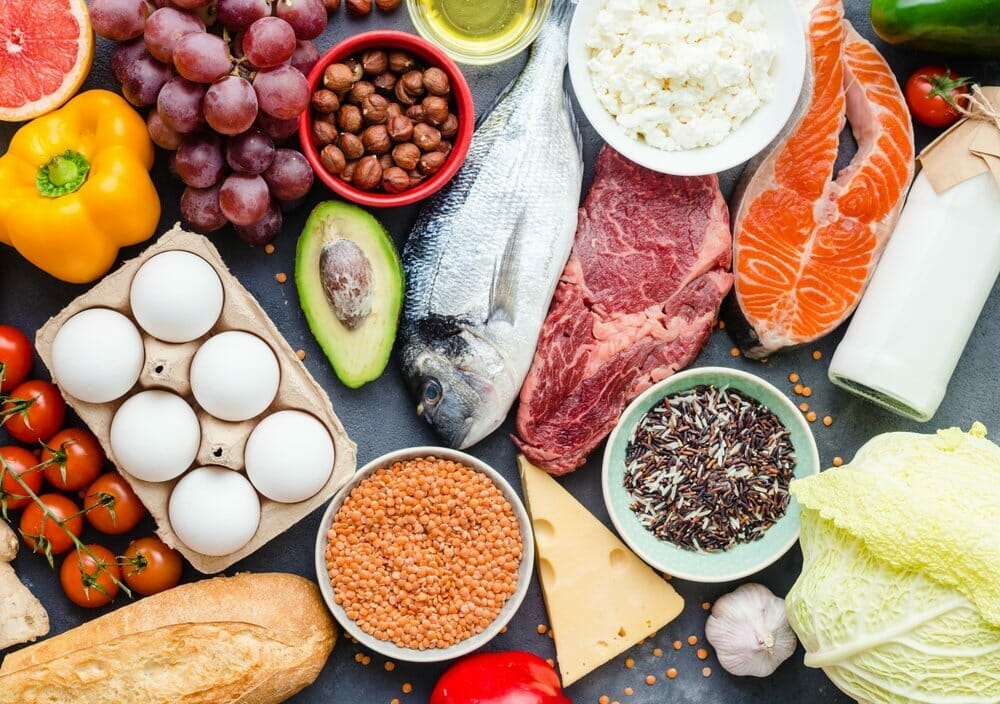Dogs and the Ketogenic Diet
Dr. Mark Roberts, PhD
Podcast Episode 2: The Ketogenic Diet for Dogs
What is a ketogenic diet?
The ketogenic diet can simply be described as a nutritional approach that moves energy used by a dog’s body, from primarily glucose to fats. When this occurs insulin levels are low, but glucagon (which raises blood glucose) and epinephrine levels are relatively normal1. This causes fat to be released from the fat cells, which travel to the liver to be processed into ketones. Ketones can provide an alternative fuel source to glucose for cells in various organs and tissues, including the brain. Outside of the liver, this process produces called ATP, which is a molecule that carries energy within cells.
Switching the fuel source
In order for a dog to effectively be in a ketogenic state, the generally established value of 0.3 mmol/L (of the ketone BHB) is used. This is lower than humans, due to dogs having a greater ability to use ketones on a peripheral level.2 The diet composition for ketosis to be reached should consist of minimum carbohydrate content, under 5% on a dry matter basis. Additionally, the carbohydrate should be unprocessed, with a meaningful fibre content. Good examples of this, includes green leafy vegetables and certain fruits, avoiding processed grains and cereals is recommended. Protein should be adequate to ensure muscle tissue is maintained and other amino acid dependent functions are sustained. However excessive protein intake can result in a dog not achieving ketosis. This is because certain amino acids, specifically alanine, glycine, and serine can be converted into blood glucose by certain enzymes in the liver3. A value of approximately 45% protein, (dry matter basis) is therefore fitting, both to facilitate the various vital roles it plays, while also not being detrimental regarding ketosis.
Finally, what about fat! So, once protein and carbohydrate are all sorted, dietary fat should be the major chunk of energy from a diet. This should typically be around 50% of the diet on a dry matter basis. This will enable a dog to fully utilise this fuel source, once any remaining carbohydrates, stored in the form of glycogen have been used. Viewed collectively, a high fat dietary component is important, however if the correct amount of dietary carbohydrate and protein is not adhered to, a dog will not successfully enter ketosis.
Other factors which can impact ketosis in dogs
There are several other factors which can impact on a dog entering a ketogenic state. Perhaps the most important is activity level. Exercise helps due to further reducing a dog’s glucose stores. This, leads to a greater reliance on fat as an energy source, pushing the animal into a greater level of ketosis. Another factor which can influence ketosis, is biological differences between dogs. Just as in humans, some dogs can enter ketosis easier than others. Awareness of
this is important, with dietary adjustments needed (increasing fat and lowering protein) if ketosis has not been reached. Feeding frequency can also impact on a dog optimising ketosis. Feeding a dog once a day has been proven to be beneficial for reducing gastrointestinal, dental, orthopedic, kidney, liver and pancreas disorders4. Moreover, this feeding frequency helps a dog’s body shift its fuel source more quickly, from relying on carbohydrates to fat, while maintaining its energy balance5.
Medium chain triglycerides (MCT’s) are also helpful for dogs regarding ketosis, with recent research finding that supplementing a diet fed to dogs with MCT’s, increases ketone body production6. In addition, another fatty acid, omega 3’s also have benefits for ketosis, a result of having positive effects on the hormone adiponectin, which helps regulates glucose levels and fatty acid breakdown7.
In summary, for a dog to be in a meaningful ketogenic state, aspects such as activity level, feeding frequency, and supplements including MCT’s have important roles. However, the outlined balance of protein, fat, and carbohydrate, is undoubtedly the critical factor, for ketosis to be effective. Of course, with careful and precise diet preparation this can be achieved, however, another option is to feed a dog Firstlight dog food. These diets have the correct macronutrient ratios, in addition supporting supplements to elicit ketosis in a dog. In my next blog, I will discuss both the health and therapeutic benefits that a ketogenic diet has for our canine friends.

References
1. Dhamija, R., Eckert, S., & Wirrell, E. (2013). Ketogenic diet. Canadian journal of neurological sciences, 40(2), 158-167.
2. Bosch, G., Hagen-Plantinga, E. A., & Hendriks, W. H. (2015). Dietary nutrient profiles of wild wolves: insights for optimal dog nutrition? British Journal of Nutrition, 113(S1), S40-S54.
3. Belo, P. S., Romsos, D. R., & Leveille, G. A. (1977). Influence of diet on lactate, alanine and serine turnover and incorporation into glucose in the dog. The Journal of Nutrition, 107(3), 397-403.
4. f Bray, E. E., Zheng, Z., Tolbert, M. K., McCoy, B. M., Kaeberlein, M., & Kerr, K. F. (2022). Once-daily feeding is associated with better health in companion dogs: results from the Dog Aging Project. GeroScience, 44(3), 1779-1790.
5. Izumida, Y., Yahagi, N., Takeuchi, Y., Nishi, M., Shikama, A., Takarada, A., … & Shimano, H. (2013). Glycogen shortage during fasting triggers liver–brain–adipose neurocircuitry to facilitate fat utilization. Nature communications, 4(1), 2316.
6. Han, F. Y., Conboy‐Schmidt, L., Rybachuk, G., Volk, H. A., Zanghi, B., Pan, Y., & Borges, K. (2021). Dietary medium chain triglycerides for management of epilepsy: New data from human, dog, and rodent studies. Epilepsia, 62(8), 1790-1806.
7. Sakr, H. F., Sirasanagandla, S. R., Das, S., Bima, A. I., & Elsamanoudy, A. Z. (2023). Low-carbohydrate ketogenic diet for improvement of glycemic control: mechanism of action of ketosis and beneficial effects. Current Diabetes Reviews, 19(2), 82-93.











